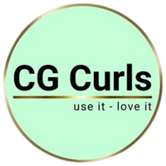The LOG Method for curly hair
Jan 26, 2024
THE LOG METHOD: THE ROUTINE EVERY CURLY WOMAN NEEDS TO KNOW FOR HYDRATED CURLS
You have those porous, coiled locks. You’ve tried every chemical treatment and styling method to make them look presentable and manageable. The battle is here and we know it.
That’s why we’re bringing you the perfect hair care routine that will not only help you restore your hair with intense hydration, but also make it shiny and frizz-free. Here’s everything you need to know to transform your curls into absolutely bouncy, shiny and soft curls.
What is the LOG method?
LOG is a styling method that helps you achieve more defined curls while making them manageable.
LOG is a method that carefully layers moisture to lock it deep into your hair. This method asks you to layer products in the following order:
Leave-in conditioner (L), Oil (O) and Gel (G).
But you may be wondering: How is this different from other ways of washing and styling our hair? Our normal way of washing hair can strip moisture away. But with the LOG method, we try to let moisture flow to our hair strands. This is also the reason why the LOG method makes your hair more manageable and shiny.
If you've heard of the LOG method, you've probably also heard of the LOC method heard.
The only difference is that in the last step you use a cream instead of a gel. A cream is a viable option for people with very porous hair and prone to drying out. The cream helps you add more moisture to make your curls frizz-free. On the other hand, the gel helps define your curls and lock in the moisture you added in the previous steps. Both methods are good and it depends on your hair type to understand which method you should follow for more manageable hair.
HOW CAN YOU UNDERSTAND YOUR HAIR TYPE BEFORE CHOOSING THE LOG METHOD?
Your genes and environment influence your hair type. Depending on your hair type, you can choose to use an aftercare method.
LOG is generally suitable for very porous and coiled hair. Depending on the texture of the hair, they are defined into 4 categories and later divided into subcategories - A, B and C according to porosity, density, curl pattern, etc.
Let's take a look at these types and also which hair type should use the LOG method.
TYPE 1
These are generally straight hair with little to no curl. Even if they are curly, it can be that little ‘S’ somewhere at the temple or around the neck. These hair types are not easily damaged and are generally associated with oily hair as the sebum from the scalp easily spreads to the ends. Due to their resistance to damage, they are usually not as porous if you maintain them properly. They are classified as A, B, and C depending on the amount of ‘S’ wave and volume.
Type 1A: Straight hair
Type 1B: Straight, voluminous hair
Type 1C: Straight hair with a few 'S' around the neck or temples
This hair type is manageable and therefore does not require the LOG method.
TYPE 2
Type 2 hair can have a mix of straight and wavy hair. This hair type can sometimes be frizzy compared to type 1 hair. They can be wavy and curl easily.Type 2 hair can be further classified as follows:
Type 2A: Long, stretched wavy hair
Type 2B: Relatively shorter wavy hair
Type 2C: Defines waves with a few curls
This hair type is usually manageable. Porous hair can benefit from the LOG method.
TYPE 3
This is curly hair but it is not tight, tight curls. It can be either 'S' or 'Z' shaped depending on the tightness of the curls. It is prone to damage and can also be frizzy. People with this hair type generally have a hard time controlling their hair due to the change in weather. It can be further classified as-
Type 3A: Loose, large curls
Type 3B: Bouncy medium curls
Type 3C: Small and tight curls
This hair type benefits from the LOG Method.
Depending on the porosity of your hair, you can determine the frequency of LOG. One way to determine the porosity of your hair is to fill a glass of water and drop a clean strand of hair into it. If it sinks, it is highly porous and loses moisture easily. If it stays on the surface of the water, it has low porosity. Highly porous strands naturally need more moisture to stay nourished. This is where the LOG method comes in.
TYPE 4
These are tightly coiled curls. Although they may look voluminous, they shrink after washing because they have fewer layers of hair cuticle. This makes them extremely susceptible to damage. They are generally 'Z' shaped curls. They tend to be porous and therefore require more moisture. They can be further classified as-
Type 4A: 'S'-shaped tight curls
Type 4B: 'Z'-shaped tight curls
Type 4C: 'Z'-shaped, loosely defined curls
They do benefit from the LOG Method because they can easily lose moisture. In order to protect the curls, they need to have a protective barrier that prevents the loss of moisture to define the curls.
To conclude this section we would like to say that anyone with hair type 2,3 and 4, very porous hair, will benefit from the LOG method.
HOW DO YOU APPLY THE LOG/LOC METHOD?
It is exactly what it sounds like. It involves three steps right after washing your hair. What you need is a leave-in conditioner, oil, and gel. Let’s get started!
STEP 1: LEAVE-IN CONDITIONER
This is the step after washing and conditioning your hair. While your hair is still wet, grab a leave-in conditioner. Section your hair before applying the product to your strands, for even distribution. The amount of product depends on the porosity and density of your hair. If you have thin and porous hair, using a lot of products can weigh your hair down. So apply the amount according to your hair's need. Comb it with a wide comb to further distribute the product over the length of your hair.
STEP 2: OIL
If you use oil right after, you can add a layer of moisture to your hair. This step allows you to seal in water and a leave-in conditioner.For this purpose, use a sealing oil such as:
- Our Super Sealing Oil
- (Jamaican black) castor oil:
- Grape seed oil:
- Jojoba oil:
- Rice oil:
- Almond oil:
- Argan oil (both sealing and moisturizing)
STEP 3: GEL
This is the final step that will not only help you retain all the goodness from the previous steps, but will also really define your curls. The idea is to reapply the gel over the entire length. After applying the gel, you should not comb your hair. Let the gel settle and fix your curls. Your hair can feel crunchy once your curls are dry. This is normal. You can squeeze out this hardness (cast) and voila, there are your perfectly shiny and defined curls!
Option: Give your hair a minute massage after each step so it can absorb the goodness of each product. After using gel, you should let it rest properly when you are going to blow dry it. This process can take an extra 15-20 minutes, but we think that is completely reasonable considering the results it gives.
WHAT ARE THE FACTORS YOU SHOULD CONSIDER BEFORE USING THE LOG METHOD?
While the LOG method is great for curly hair, there are certain factors you need to consider that can lead to unwanted results. Here’s something you need to keep in mind before the LOG method:
- WATER QUALITY
Hard water leaves a negative charge on your hair strands, making them frizzy, hard, rough and brittle. None of this is pretty, especially for curly hair. LOG introduces three products for your hair to soften it, but due to mineral residues from hard water, your hair does not absorb these products. This leaves your hair greasy and rough. So make sure you use a hair softening shampoo and conditioner in case you have to work with hard water.
- DIVIDE YOUR HAIR INTO SECTIONS
This is so important in the LOG method. It is because the product needs to reach every strand in order to make your hair manageable, otherwise you will be left with parts of your hair that are still frizzy and rough. Working in sections while doing the LOG method allows for an even distribution of the product.
- COMBING WITH A WIDE BRUSH
The LOG method allows you to brush wet hair, which generally goes against the classic norm that says that combing wet hair can lead to more hair loss. Combing during the LOG method allows the product to be evenly distributed throughout your curls, but you have to make sure that they are not cruel to your curls. Use a wide tooth comb or a brush with soft bristles and brush gently through your wet/damp hair.
As important as it is to brush your hair during the LOG method, it is equally important to be careful when using a comb on wet/damp hair.
- USING THE CORRECT AMOUNT
Depending on the porosity, density and tightness of your curls, you can decide how much product to apply. Applying too much product can weigh your hair down and make it look greasy.Start with less product and add more if you feel you need it.
HOW OFTEN CAN YOU DO THE LOG METHOD?
If you have highly porous hair, you can ideally use the LOG method every wash day, but if your hair is medium to low porosity, your curls can benefit from an alternate wash day. The LOG method is primarily designed to infuse moisture into your curls, making them healthy and manageable. The frequency is up to you, depending on how easily your hair loses moisture.
WHICH PRODUCTS ARE SUITABLE FOR THE LOC METHOD?
Sealing oils are the best to use in this method, because the name says it all. Not all oils are suitable because you have penetrating oils and they do not provide a sealing layer around your hair.
IT BOTTOM LINE:
LOG is a method to hydrate and define your curls in three steps after washing: Leave-in conditioner, oil and gel.
It is great for hair types 3 and 4 which can have very porous hair. Porous hair tends to lose moisture quickly and LOG is the solution that introduces moisture in layers to hold it in longer. If you have curly hair, you should give the LOG method 3-4 tries for manageable and shiny curls!


